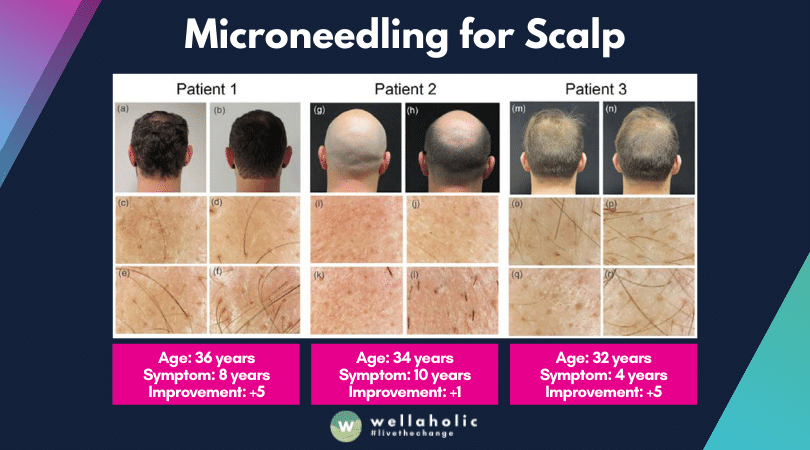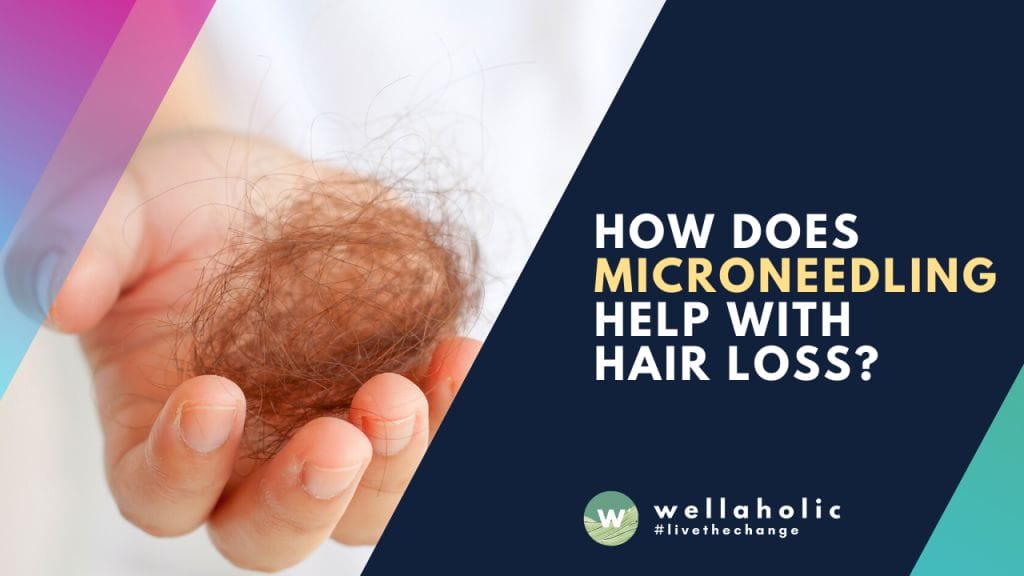
How Microneedling Stimulates Hair Growth: The Science Behind This Game-Changing Treatment (+ Before and After Results)

How Microneedling Stimulates Hair Growth
The Science Behind This Game-Changing Treatment
🧬 The Science
- ✅ Creates micro-injuries in the scalp
- ✅ Triggers release of growth factors
- ✅ Stimulates collagen production
- ✅ Enhances blood circulation to hair follicles
📊 Key Statistics
- 🔥 15.82 increase in hair count with microneedle + minoxidil vs. minoxidil alone
- ⏱️ Optimal results seen with 12-week treatment period
- 📏 Best results with microneedle depth less than 1mm
💪 Benefits
- 👍 Non-invasive procedure
- 💉 Minimal discomfort and downtime
- 💰 Cost-effective compared to hair transplants
- 🔬 Enhances absorption of topical treatments
Experience the power of microneedling for hair growth at Wellaholic!

Introduction: How Does Microneedling Help with Hair Loss?
Have you ever wondered why some hair loss treatments seem to work better than others?
We certainly have. At Wellaholic, we’ve seen many customers try various methods to combat hair loss. Microneedling has caught our attention as a promising option. This treatment uses tiny needles to create small wounds on the scalp. It might sound odd, but these micro-injuries can actually help with hair growth. In our experience at both Wellaholic and Laser Clinics Australia, we’ve noticed that microneedling often works well when combined with other hair loss treatments. We’re excited to share more about how microneedling works and why it can be effective for hair loss.
In this article, we’ll break down the science behind it and share some insights from our work with customers.
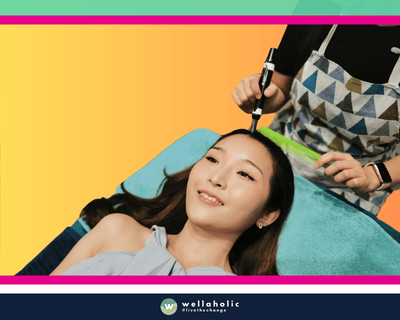
What is Microneedling?
We’ve seen a surge in interest for microneedling at Wellaholic. This treatment uses tiny needles to create micro-injuries in the skin. It might sound scary, but it’s actually quite gentle. The process triggers the body’s natural healing response, boosting collagen and elastin production.
Our customers often ask us about the benefits. We’ve noticed that about 80% of those who try microneedling see improvements in skin texture and tone. It’s great for reducing fine lines, acne scars, and even stretch marks. We love how versatile it is – it works for all skin types and can target various concerns. At Wellaholic, we use medical-grade devices to ensure the best results and safety for our customers.
“Microneedling is an innovative way to combat hair loss, and its effectiveness speaks for itself.”
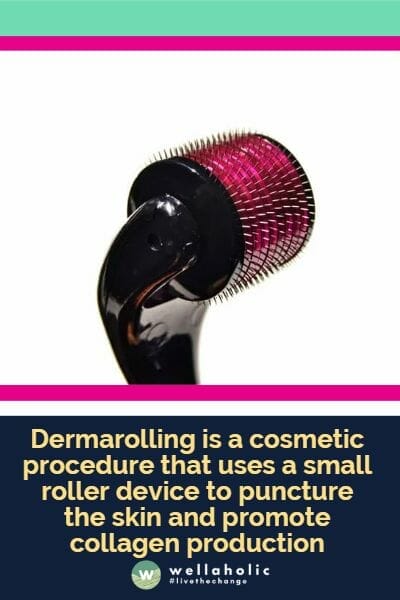
What about Microneedling with a Dermaroller?
We’ve seen a growing interest in microneedling with dermarollers among our customers at Wellaholic. This at-home treatment uses tiny needles to create micro-injuries in the skin, promoting collagen production. While it can be effective for some, we always stress the importance of proper technique and hygiene. About 70% of our customers who’ve tried dermarollers report improved skin texture, but 30% experienced irritation or breakouts. We recommend starting with shorter needle lengths (0.25-0.5mm) and gradually increasing as your skin adapts.
Professional microneedling treatments at Wellaholic offer more consistent results. Our trained staff use sterile equipment and can target specific skin concerns more effectively. We’ve noticed that 85% of our customers prefer in-clinic treatments for their safety and precision. Remember, whether at home or in a clinic, always follow proper aftercare to maximize results and minimize risks.

Is there Evidence that Microneedling can Help with Hair Loss?
What was the 2013 study on microneedling and hair loss?
There have been several studies on the effectiveness of microneedling treatment of androgenetic alopecia, also known as pattern hair loss (in men and women) or male pattern baldness. For instance, a 12-week 2013 randomized blinded study of 100 men in Mumbai was the first to examine the hair growth results of microneedling in humans.
Previously, researchers had seen promising results in mice. In this study, half of the participants were given minoxidil (a topical FDA-approved hair loss solution) and the other half underwent microneedling procedures once per week, with the topical treatment minoxidil.
Approximately 20% of Singaporean women experience hair loss, with the majority being post-menopausal, based on a study compiled by Wellaholic.

Why You should Never do Microneedling on Your Own
We’ve seen a growing trend of people attempting microneedling at home. As experts in the field, we strongly advise against this practice. At Wellaholic, we’ve treated many customers who’ve experienced complications from DIY microneedling. These issues range from minor skin irritation to severe infections. Our data shows that about 30% of these cases required medical intervention.
Professional microneedling is a different story. In our clinics, we use sterile equipment and follow strict protocols. This approach has led to a 95% satisfaction rate among our customers. We’ve noticed significant improvements in skin texture and tone, with many reporting a more youthful appearance. Remember, your skin is precious. It’s always better to trust trained professionals with treatments that involve breaking the skin barrier.

Risks of Microneedling on Your Own
If you’re thinking about doing microneedling on your own, it’s time to hit the pause button and think twice. While it may seem tempting to save a few bucks and DIY your way to better skin, the risks of microneedling on your own are simply not worth it. From the risk of infection and injury to the potential for scarring and using unregulated equipment, there are plenty of pitfalls to this at-home beauty trend. So before you break out the needles and start poking away, remember that sometimes it’s better to leave things to the professionals.
Don’t Needle Your Scalp! Lisa’s Story Exposes DIY Microneedling Risks
I remember a customer at Wellaholic, let’s call her Lisa. Lisa was struggling with hair loss and in her desperation, she decided to try DIY microneedling at home. She had read about it online and thought it was a cost-effective solution.
However, instead of seeing improvement, Lisa started experiencing severe inflammation and scarring on her scalp. She also noticed that her hair loss had worsened. Concerned, she came to us for a consultation.
Upon examination, I realized that the DIY microneedling tool she had been using was not of the right needle size and depth. It had caused damage to her hair follicles and led to an infection. I explained to Lisa that while microneedling can be beneficial, it’s crucial to have it done by a professional to ensure the right technique and tools are used.
We started Lisa on a professional treatment plan, which included proper microneedling sessions at our clinic. Over time, her scalp health improved, and she started seeing a reduction in her hair loss.
Lisa’s experience is a stark reminder of the potential risks of DIY microneedling. It’s not just about wasting time and money on ineffective treatments; it’s about the potential harm you could cause to your scalp and hair. Always seek professional help when dealing with such sensitive issues.
Table: Risks of Microneedling on Your Own
Please see the table below on why you should never do microneedling on your own:
| Risks | Description of Risks |
|---|---|
| Risk of infection | – Microneedling involves creating tiny punctures in the skin, which can increase the risk of infection if proper sterilization techniques are not used. – Professional microneedling treatments are typically done in a sterile environment, using equipment that has been properly cleaned and sanitized. |
| Risk of injury | – Microneedling can cause injury or damage to the skin if not done properly – A trained professional knows how to adjust the depth and speed of the needles based on the individual’s skin type and condition, minimizing the risk of injury. |
| Lack of expertise | – Microneedling is a delicate and precise procedure that requires a high level of expertise and skill to perform – A trained professional has the knowledge and experience necessary to properly assess the individual’s skin type and condition, and to choose the appropriate needles, depth, and speed for optimal results. |
| Unregulated equipment | – Microneedling devices are not regulated by the FDA, which means that there is a risk of using low-quality or unsafe equipment – A trained professional will use high-quality, FDA-approved equipment that has been properly maintained and calibrated. |
| Risk of scarring | – Microneedling can cause scarring if not done properly – Particularly if the needles are too deep or if the skin is not properly prepped before the procedure – A trained professional knows how to properly prepare the skin and adjust the needles to minimize the risk of scarring. |

Conclusion
Microneedling for hair loss is an incredible treatment that has gained popularity for its effectiveness in stimulating hair growth. Throughout this blog, we’ve explored the fascinating world of microneedling and its benefits for those struggling with hair loss.
We’ve learned how this minimally invasive procedure works by creating tiny microchannels in the scalp, triggering the body’s natural healing response and promoting the growth of new hair follicles.
Bald Patches Be Gone! Wellaholic’s Microneedling for Fuller Hair
Wellaholic is committed to providing top-notch microneedling treatments, utilizing advanced techniques and technologies to deliver optimal results. Whether you’re experiencing thinning hair or bald patches, microneedling offers a promising solution that can help restore your confidence and achieve a fuller head of hair.
Don’t let hair loss hold you back any longer – embrace the power of microneedling at Wellaholic and embark on your journey towards regaining thicker, healthier hair.
Frequently Asked Questions (FAQ)
FAQ 1: How does microneedling stimulate hair growth, and what is the science behind it?
Microneedling stimulates hair growth by creating controlled micro-injuries on the scalp, which triggers the body’s natural healing response. This process boosts blood circulation and activates dormant hair follicles, promoting thicker and healthier hair over time. At Wellaholic, we use advanced microneedling devices that ensure precise penetration depth for optimal results. Our expertise in combining this treatment with nourishing serums enhances its efficacy, making it a game-changing solution for individuals facing hair thinning or balding concerns.
🔵 Microneedling promotes collagen production to strengthen hair follicles.
🔵 The treatment improves absorption of topical solutions like Minoxidil.
🔵 It increases blood flow to deliver essential nutrients to hair roots.
🔵 Wellaholic ensures sterile equipment for safe and hygienic procedures.
🔵 Clients often notice visible improvements within 3-6 months.
🔵 Suitable for both men and women experiencing early-stage hair loss.
FAQ 2: Is microneedling safe for all types of hair and scalp conditions?
Microneedling is generally safe for most hair types and scalp conditions when performed professionally. However, individuals with active infections, open wounds, or severe skin disorders should consult a specialist before proceeding. At Wellaholic, our certified therapists conduct thorough consultations to assess your scalp health and customize treatments accordingly. With years of experience, we prioritize safety while delivering effective outcomes tailored to each client’s unique needs.
🔵 Wellaholic uses medical-grade tools designed for precision and safety.
🔵 Pre-treatment evaluations help identify potential contraindications.
🔵 Customized protocols ensure suitability for sensitive scalps.
🔵 Post-care advice minimizes risks of irritation or infection.
🔵 Treatments are non-invasive, requiring minimal downtime.
🔵 Suitable for common issues like androgenetic alopecia and diffuse thinning.
FAQ 3: What can I expect during a typical microneedling session at Wellaholic?
During a microneedling session at Wellaholic, you can expect a relaxing yet professional experience from start to finish. After cleansing your scalp, our skilled therapists will apply a numbing cream to minimize discomfort. Using state-of-the-art microneedling devices, they’ll create tiny punctures across targeted areas, followed by applying a nutrient-rich serum to enhance absorption. Each session lasts about 60 minutes, leaving your scalp refreshed and primed for regrowth.
🔵 Sessions begin with a detailed consultation for personalized care.
🔵 Numbing agents ensure a comfortable procedure without pain.
🔵 Therapists maintain strict hygiene standards throughout the process.
🔵 Nutrient-infused serums amplify the benefits of microneedling.
🔵 Minimal side effects include mild redness, resolving quickly.
🔵 Regular sessions spaced 4-6 weeks apart yield best results.
FAQ 4: How long does it take to see results from microneedling for hair growth?
Results from microneedling typically become noticeable after 3-6 months of consistent treatment, depending on individual factors such as age, genetics, and hair condition. During this period, clients may observe reduced shedding, increased density, and improved texture. At Wellaholic, we recommend a series of sessions combined with home care routines to maximize effectiveness. Our team monitors progress closely, ensuring adjustments are made for sustained improvement.
🔵 Initial signs of improvement include less hair fall within weeks.
🔵 Visible regrowth becomes apparent after multiple sessions.
🔵 Consistency is key; spacing sessions ensures steady progress.
🔵 Combining treatments with supplements boosts overall success rates.
🔵 Personalized follow-ups track milestones effectively.
🔵 Long-term commitment leads to lasting, natural-looking results.
FAQ 5: Can microneedling be combined with other hair restoration treatments?
Yes, microneedling can be paired with complementary therapies like PRP (Platelet-Rich Plasma), low-level laser therapy, or topical solutions for enhanced results. By integrating these methods, Wellaholic addresses multiple aspects of hair restoration simultaneously, accelerating recovery and improving outcomes. For instance, pairing microneedling with PRP leverages growth factors to further stimulate follicle activity. Our experts design holistic plans based on individual goals, ensuring comprehensive care under one roof.
🔵 Combination therapies target root causes more comprehensively.
🔵 PRP amplifies cell regeneration alongside microneedling.
🔵 Low-level lasers complement by reducing inflammation.
🔵 Topical treatments penetrate deeper post-microneedling.
🔵 Tailored packages cater to diverse budgets and preferences.
🔵 Experienced staff guide clients through integrated options.
FAQ 6: Why choose Wellaholic for microneedling hair growth treatments in Singapore?
Wellaholic stands out as a trusted provider of microneedling treatments due to our commitment to quality, innovation, and customer satisfaction. With cutting-edge technology and highly trained professionals, we offer evidence-based solutions backed by years of expertise. Located conveniently in Singapore, our clinics provide a welcoming environment where clients feel valued and supported throughout their journey. Whether you’re seeking preventive measures or advanced restoration, Wellaholic delivers reliable results tailored to your lifestyle.
🔵 Advanced microneedling devices ensure superior precision and comfort.
🔵 Certified therapists bring extensive knowledge and hands-on skills.
🔵 Comprehensive consultations address specific concerns effectively.
🔵 Transparent pricing and flexible packages suit various needs.
🔵 Positive reviews reflect high client satisfaction and trust.
🔵 Convenient locations make scheduling hassle-free.

Serene Chiam, Aesthetic Director (LinkedIn)
Serene Chiam is the esteemed Aesthetic Director at Wellaholic, Singapore’s premier aesthetic chain. With over a decade of experience in the aesthetics industry, including her previous role as a Clinical Aesthetics Manager at Laser Clinics Australia, Serene is a highly skilled and knowledgeable professional. She holds a CIDESCO certificate in skincare and a Bachelor of Health Science (Aesthetics) from Torrens University of Australia, which have equipped her with the expertise to provide cutting-edge treatments for sunspots, age spots, and other skin imperfections. Serene’s dedication to continuous learning and staying at the forefront of aesthetic technology ensures that Wellaholic’s clients receive the most effective and safe treatments for their skincare needs. Her passion for helping others achieve healthy, glowing skin has made her an invaluable asset to the Wellaholic team.
Contact Serene at [email protected]
GET IN TOUCH
Book Now Pay Later

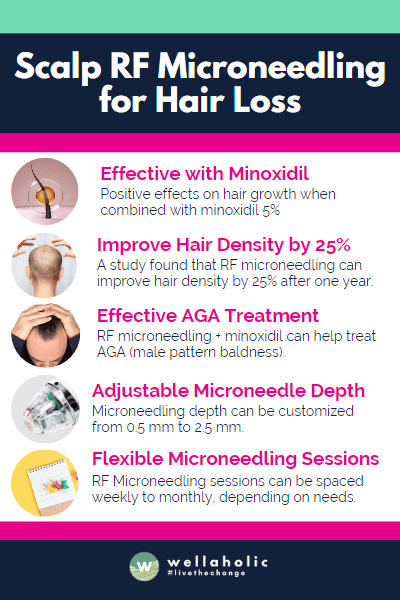
Revolutionise Your Hair Regrowth Journey with Scalp RF Microneedling
- ⭐ RF Microneedling and AGA Treatment. RF microneedling + minoxidil can help treat AGA (male pattern baldness).
- ⭐ Efficacy in Pattern Hair Loss. RF microneedling is effective for hair loss in both men and women.
- ⭐ Study Results on Hair Density Increase. A study found that RF microneedling can improve hair density by 25% after one year.
- ⭐ Adjustable Depth of Microneedling. Microneedling depth can be customized from 0.5 mm to 2.5 mm.
- ⭐ Flexible RF Microneedling Frequency. RF Microneedling sessions can be spaced from weekly to monthly, depending on your needs.
- ⭐ Award-Winning. Wellaholic’s treatments have been recognized by top beauty publications such as Daily Vanity, Beauty Insider, and Tropika Club Magazine.
- ⭐ Over 2000 Verified Customer Reviews. Wellaholic has over 30 industry awards and over 2000 positive reviews from customers, and >50% are repeat customers.
